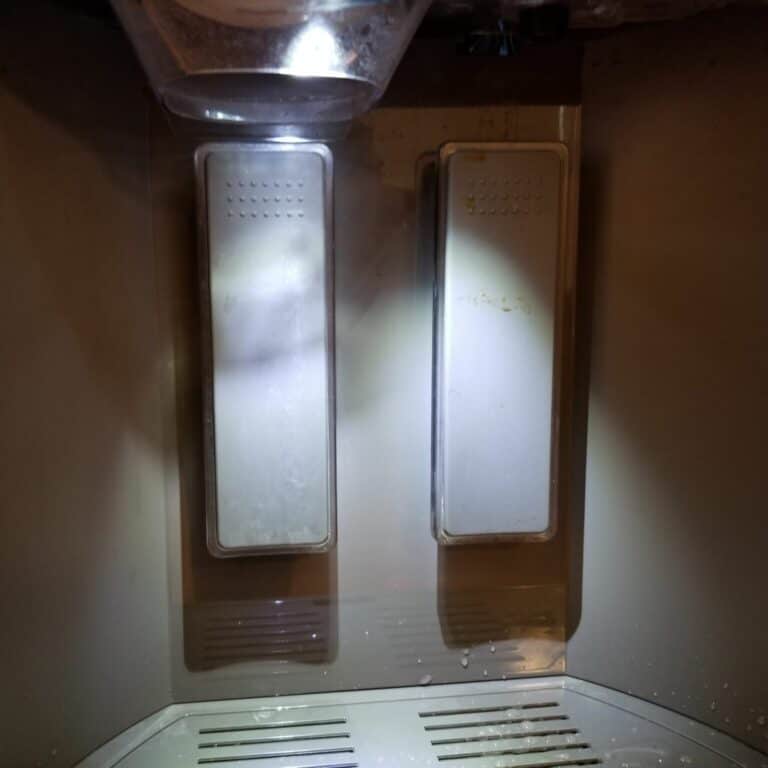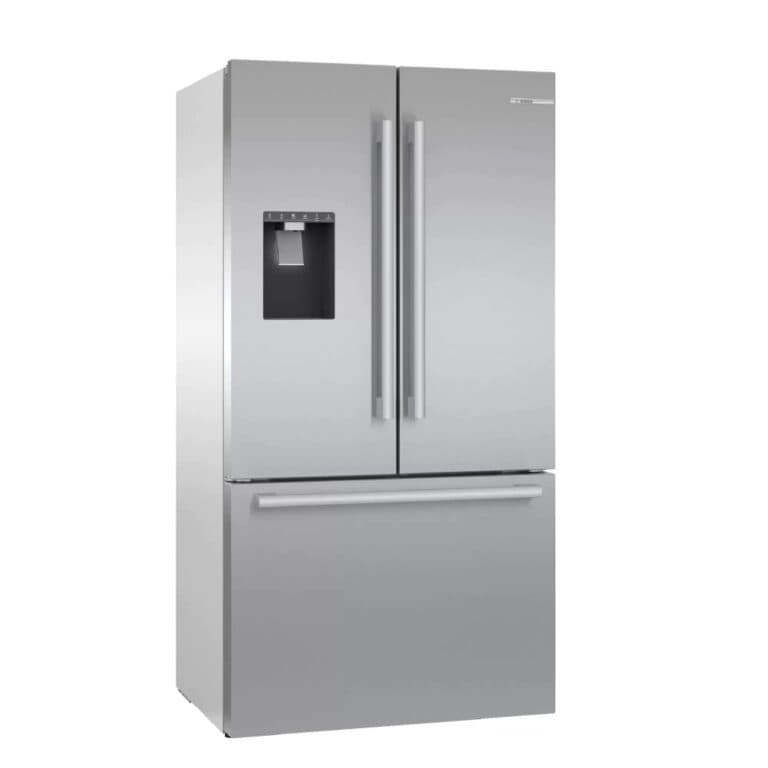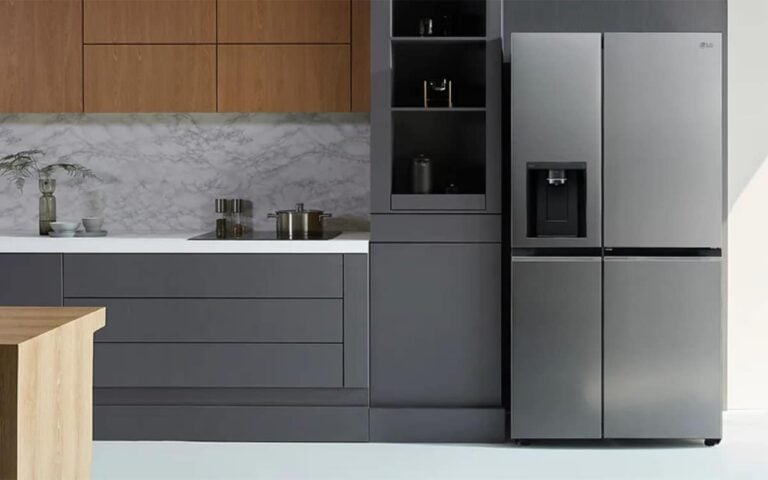The Best Temperature for a Mini Fridge: Tips for Fresh Food Storage
If your temperature is off, your food is going to go bad.
Your mini fridge doesn’t have the same dedicated circuit that a standard, full-sized refrigerator does, which makes it more difficult to maintain a consistent temperature.
Many mini fridge makers know of this. They build their fridges to withstand fluctuating temperatures.
So, what temperature should a mini fridge be set at?
What Temperature Should My Mini Fridge Be?
Refrigerator temperatures should be between 32°F and 40°F. This is the perfect zone between freezing and the food safety limit.
In food service, many machines are tested once every four hours for temperature control to ensure that food doesn’t spoil or become a safety hazard. At 40°F, food is safe.
Above that, it begins to spoil beyond its intended expiration date set by the food’s manufacturer.
Anything over 40°F promotes bacterial growth at a rapid rate. Food will still grow bacteria in your fridge. (Have you seen carrots or potatoes get fuzzy in the vegetable drawer?) But, it happens at a very, very slow pace.
We aren’t seeking a magical temperature range. It won’t keep food perfect. It will only keep it safe to eat and enjoy, without risk of food poisoning.
Anything between 40°F and 135°F and 140°F (the jury is still out on which) is considered to be in the food danger zone. The most harmful zone is between 70°F and 125°F, where bacteria grow faster than at any other temperature.
If you’re testing the temperature of your fridge and it’s between these numbers, it means that the unit has died. Unless you compulsively check your fridge 10–12 times per day for its temperature, you’ll have to toss out your food.
That’s why it’s so important to get a fridge or mini fridge from a reliable brand.
Different Temperature Settings: Beverages, Make-Up, Insulin Storage, And More
We know the food safety zone and danger zones, but food isn’t the only thing that people store in the refrigerator.
Many people buy tiny, portable fridges just to store their makeup. Others store their expensive insulin, a life-saving drug for type II diabetics, in a temperature-controlled fridge. It has a very short shelf life.
Refrigeration is a critical part of our lives. It keeps the milk from spoiling. It helps us store medications and grooming products. It also keeps our drinks and alcohol at the best temperature for enjoyment.
These are some of the optimal temperatures for different things that you might find in the refrigerator.
Fridge Temperature for Insulin

Insulin is perhaps the most important thing on this list to keep within a good temperature range.
You don’t want milk or orange juice spoiling, but an injectable medicine like insulin is literally a life-or-death scenario. As such, diabetics rely heavily on their refrigeration units for consistent temps.
Insulin should be stored between 35.6°F and 46.6°F, according to the IDDT. Insulin can be stored at room temperature for 28 days. But, it’s best not to refrigerate ready-to-use insulin pens.
For that, you would need to see the recommendation and guidelines set by the insulin manufacturer.
Fridge Temperature for Makeup
Makeup is a tricky one. You must fight the heat. It can melt or ruin sensitive cosmetics, like mascara and face cream.
You don’t want it to melt and reform; otherwise, it’s going to fail to actually provide the cosmetic remedy that you want.
Also, you’re fighting humidity. That’s half the reason to use a fridge for your makeup. (By the way, you can buy small, makeup-specific fridges.)
Anywhere from 45°F to 60°F will be good for most cosmetics.
Soft Beverages
These only need to be chilled, so you can get away with about 45°F to 56°F and enjoy them.
Since soft drinks are normally stored at room temperature, and for good reason: their carbonation stays nice and bubbly.
Storing your soft drinks in a fridge that’s too cold can actually mess with carbonation and make your soft drinks less enjoyable. You want them chilled, not cold.
Juice
Pay attention to the labels on the juice container. If it’s orange juice (not an orange juice drink, which can usually be found at room temperature on the shelves, like Hi-C), then it needs to be refrigerated.
If it’s a juice from concentrate that doesn’t state that it needs to be refrigerated, then you’re good to go. Most of the time, a drink will say, “Refrigerate After Opening.” This means it’s shelf stable until opened, when oxidation begins.
Juices should be enjoyed as close to ice as you can get. Maintain the standard temperature range of 32°F up to 40°F, but try to keep it between 32°F and 36°F for optimal enjoyment.
Even shelf stable juice can still go bad in the fridge, and usually at the same rate that orange juice deteriorates.
Related: How Long Do Certain Foods Last In The Fridge?
How To Fix Poor Temperatures In Your Mini Fridge?
If you open the refrigerator door, you lose about one or two degrees of air temperature almost immediately.
The warmer air in the room is going to merge with the cold air, and going forward, you can lose about one degree of air temperature every 20-30 seconds.
Your fridge is going to detect the air temperature change and kick the compressor on to get back to a good temperature.
Just about every mini fridge you find is going to come with a built-in thermostat, and just like the thermostat in your home, it detects when the desired temperature has been reached and stops working for the time being.
This preserves energy. The best way to fix bad temps in your fridge is to first assess if the fridge is broken or if it’s just heavily used.
Close the fridge for four to six hours. Then, check an LED gauge on its outside. Or, place a circular fridge thermometer inside to monitor the temperature. If you’re still running into issues, there could be one more thing to try.
If your temperatures are still too high, the compressor coils might be dusty. It may also be taking ages to chill the air. This doesn’t sound like a big issue, but it is.
If you notice your compressor is loud and sounds like it’s working overtime, it could be covered in dust. The dust layer slows the compressor’s cooling. It must work overtime to keep the fridge at your desired temperature.
| Related: Why is Your Refrigerator Not Cooling? |
Humidity Needs To Be Measured, Too
If your fridge door gasket is torn or worn out, it will mess up the internal temperature.
However, if your gasket is malfunctioning, it’s also going to allow additional humidity into your mini fridge, and that’s where more problems start.
This can cause ice crystals to form on the outside of vegetables (especially if you’re around the 32°F mark on average) and give bacteria the perfect conditions to grow.
This can affect fresh foods in your fridge and the entire interior. Bacteria will grow on the sides and bottom, turning your mini fridge into a petri dish.
Humidity can also alter the temperature in your fridge, which is why it’s important to pay attention to it.
Buy A Thermometer

If your fridge doesn’t have a built-in thermometer, buy a small, circular metal one. It can be an LCD screen with a digital display or not.
A good temperature in your mini fridge is critical. It keeps food and drinks safe and limits bacteria.
This simple, inexpensive thermometer from Taylor does the trick without costing much at all.
Designate One Use and Set The Temperature
You know the right food storage temperature. Some drinks are chilled at higher temps. It’s important to be consistent for food safety.
When you buy your next mini fridge, check our guide. It will help you find a reliable unit from a trusted brand. Also, make sure the fridge has a warranty in case the compressor fails.






